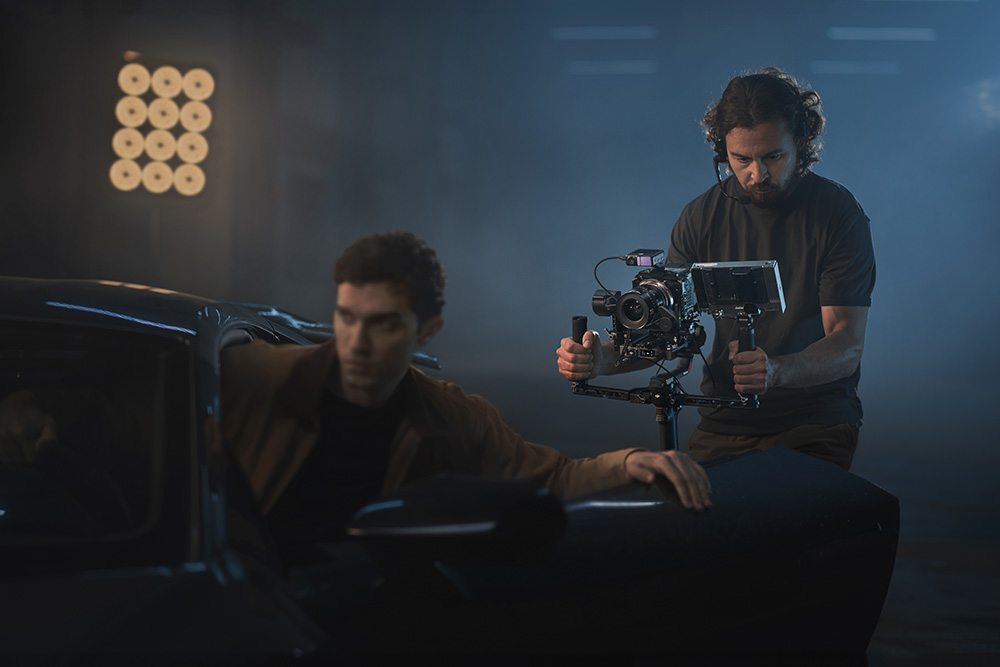- Call us: 01444 237070
- Contact Us
- Stores
- Sign In / Register
-
- Back
- Used Cameras
- Used Accessories
- Used Lenses
- Used Video
- Used Film Equipment
- Used Stock Alert
- Used Blank Test
- Sell or Part Exchange
- Used Clearance
- Recently Added Used Equipment
- Park Picks
- All Used Black Friday Deals
- Faulty
- Trade-In
- Blog
- New in
- Call us
- Contact us
- Stores
- Sign in
- Categories
- Tips & Inspiration
- Reviews
- News
- Events
- Features
- Buying Guides
- Competitions
DJI RS 4 Vs RS 4 Pro Gimbal Stabiliser FAQ
In the ever evolving world of content creation the quest to capture the perfect shot requires a combination of skill and the right equipment. Enter DJI camera gimbals, where the newly launched DJI RS 4 and RS 4 Pro Gimbal Stabilisers stand out as exceptional tools for solo filmmakers and production teams striving for cinematic excellence.
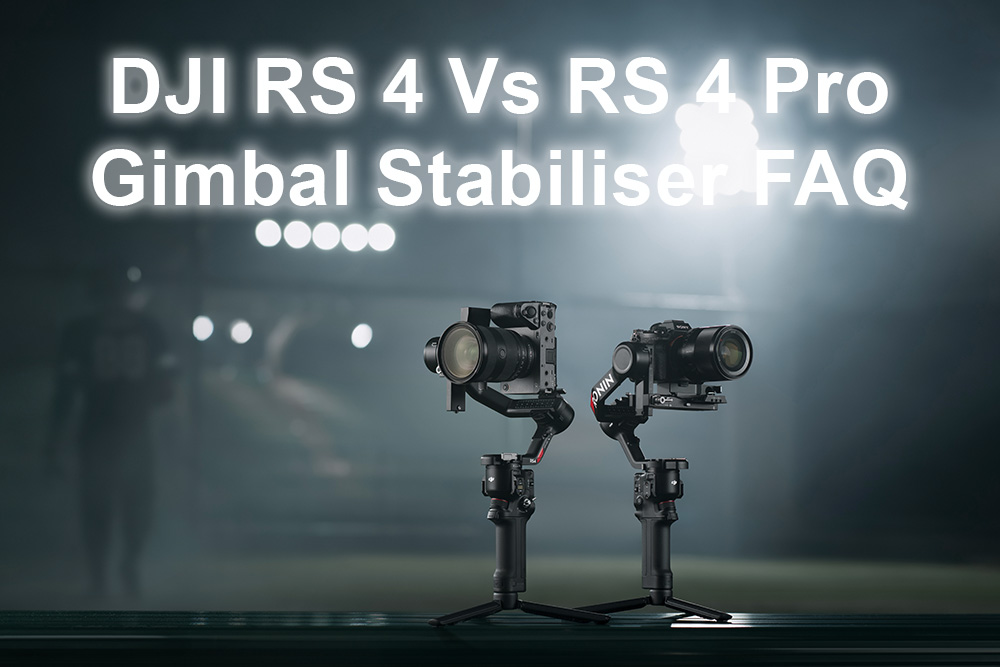
This review explores DJI RS 4 Vs RS 4 Pro Gimbal Stabiliser FAQs and is designed to help you unravel the differences between these two high-end camera stabilisers. We dive into what sets them apart from previous generations, what’s included in the Combos, and explore accessories to enhance the filmmaking experience.
Whether you're a seasoned cinematographer or a newly launched solo content creator, understanding these differences is key to choosing the right gimbal for your creative journey. Join us as we navigate through the features, performance, and compatibility of the DJI RS 4 and RS 4 Pro.
What is the purpose of a gimbal?
With prices approaching £1000 you may wonder if a gimbal is worth it, and when to use one. While it’s true that gimbal movements don’t suit every scene, a gimbal stabiliser does provide numerous advantages for many commonplace shots.
A gimbal stabilises the camera, ensuring smooth, professional-quality footage, free from the unwanted effects of shake or movement. It is an invaluable tool for capturing dynamic scenes with precision, enhancing production value. By allowing for fluid motion and creative angles, a gimbal has become an essential tool for many filmmakers and content creators.
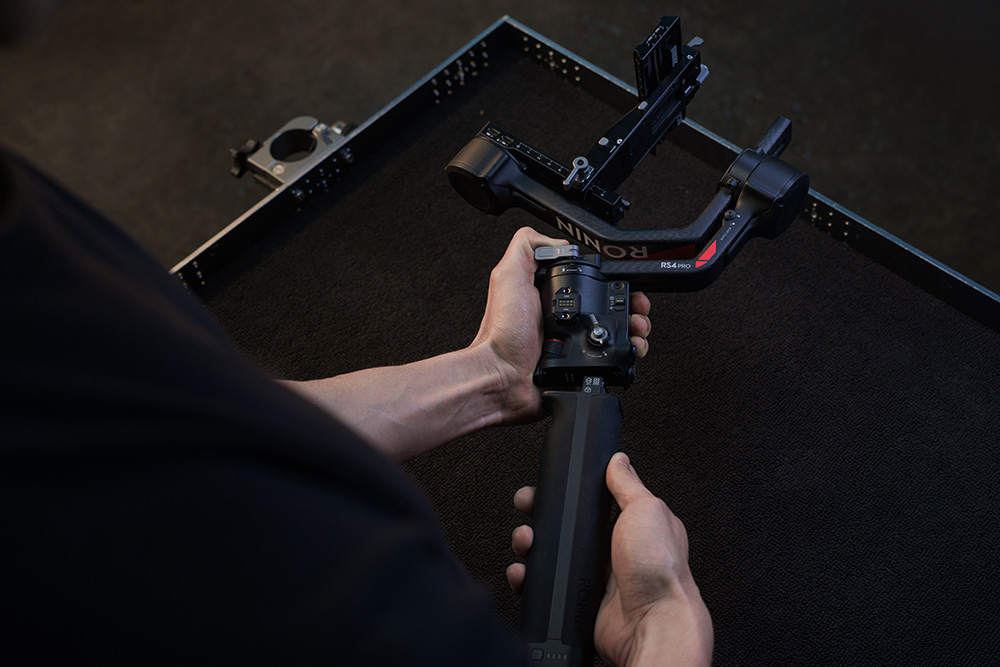
What does the DJI RS 4 gimbal do?
The RS 4 and RS 4 Pro are both a single-handed 3-axis DJI gimbal, which makes it easier to capture cinematic movements. Both Ronin Series stabilisers are aimed at solo creators and teams who shoot movies with a standard mirrorless camera, or small cinema camera (RS 4 Pro) plus a standard lens.
The key distinction between the two models lies in their load capacity, with 3kg for the standard version and 4.5kg for the Pro model. However, DJI has further differentiated the standard from the Pro in this generation, by introducing a variety of features that set these two new models apart. Discover what these key differences are further down in our review.
How much does DJI RS 4 and RS 4 Pro cost?
DJI released four options, starting with the base RS 4, which costs £469.00, and the RS 4 Combo, priced at £619.00. The DJI RS 4 Pro is £749.00, while the RS 4 Pro Combo costs £949.00, which means that DJI had kept pricing identical to the outgoing models.
Find out what’s included in each of the combos below.
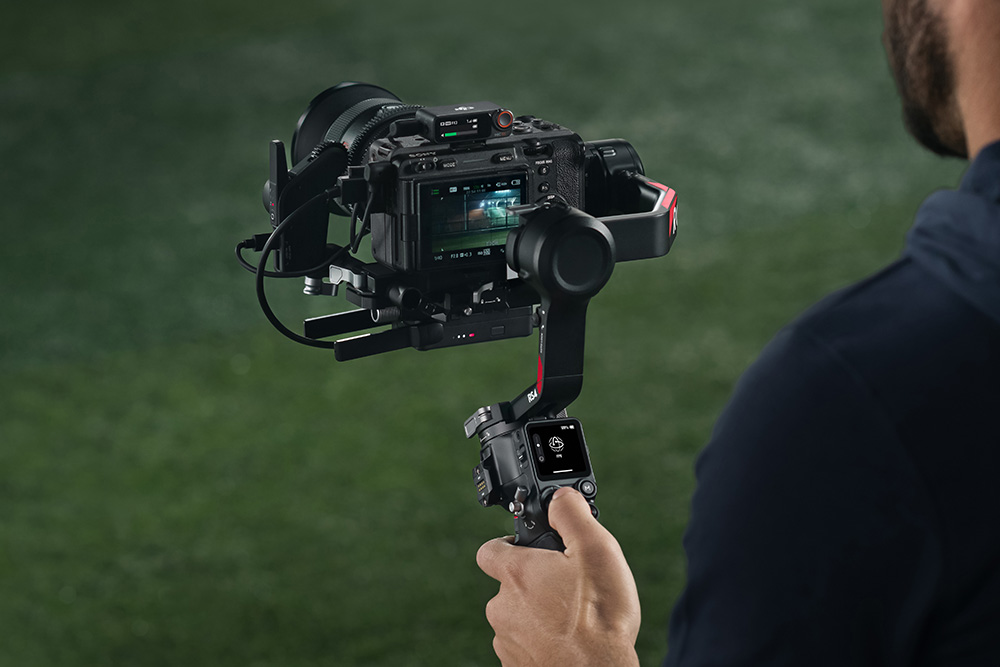
When did the DJI RS 4 come out?
The fourth-generation DJI RS 4 and RS 4 Pro stabiliser launched on April 09, 2024, just under two years since the RS 3 was released back in June 2022.
Can you shoot vertical with DJI RS 4?
Yes, one of the major updates for this generation is improved native vertical shooting, which enables quicker changes between horizontal and vertical modes, without needing any accessories.
How long is the battery life on the DJI RS 4?
The DJI RS 4 has a 12 hour battery life, whereas the RS 4 Pro offers up to 13 hours, thanks to the included 1950mAh BG30 battery. Both models accept the optional RS BG70 High-Capacity Battery Grip, which extends runtime to a maximum 29 hours and costs £129.00.
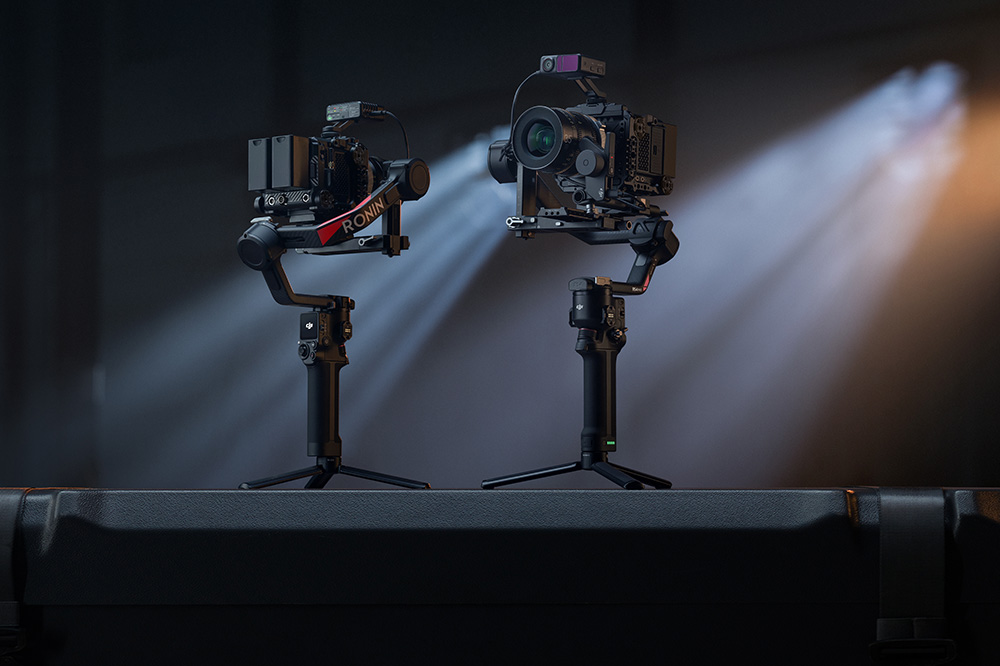
What is the difference between DJI RS4 and RS 3?
The DJI RS 4 enhances shooting flexibility with second-generation native vertical video capabilities and a new joystick mode for easy zoom control. Enhanced with dual rolling bearings for smooth roll axis adjustments and tighter second-generation axis locks, it reduces gimbal shake, while streamlining the user experience. Main upgrades include:
- Improved Native vertical shooting
- New Zoom/gimbal control Joystick mode switch
- Improved smoother balancing with Teflon™ coated axis arms
- 3kg payload capacity with extended tilt axis
- New Extensive control ecosystem thanks to RSA communication port
- Improved DJI’s fourth generation stabilisation algorithm
- New Optional BG70 high-capacity battery grip for approx. 2.5x battery runtime
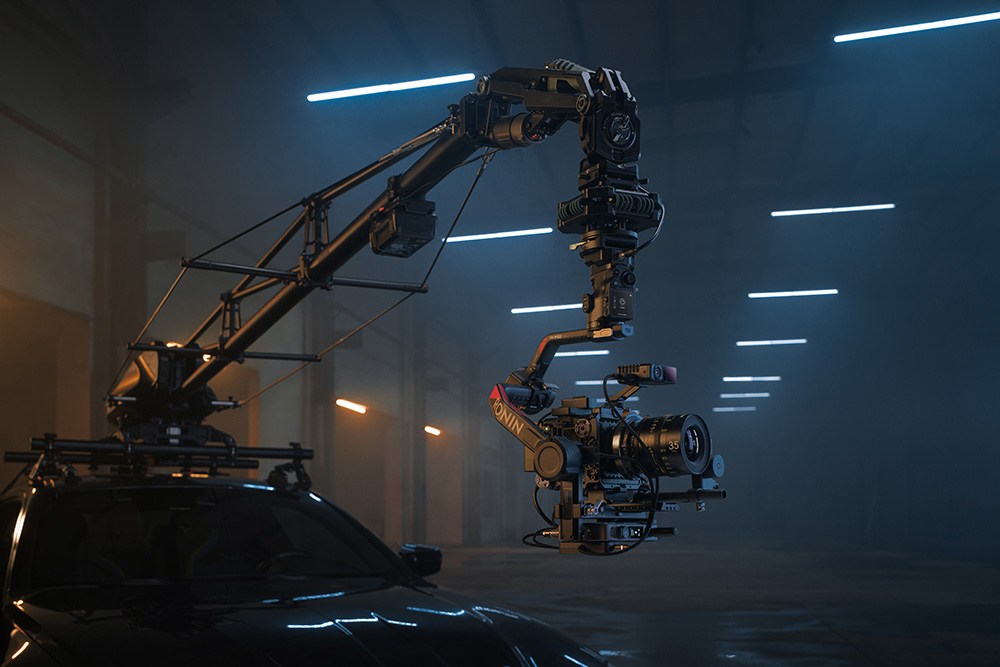
What are the differences between DJI RS 4 Pro and DJI RS 3 Pro?
DJI RS 4 Pro comes with the same upgrades as the base RS 4 stabiliser, which include improved native vertical video, new joystick mode and dual rolling bearings for improved stabilisation. It also adds a number of distinct features such as:
- New Car Mount mode
- Improved 20% increase in motor torque across three axes (VS previous-gen.)
- Upgraded BG30 Grip
- Compatibility with the DJI Pro Ecosystem
- Improved Native vertical shooting
- New Zoom/gimbal control Joystick mode switch
- Improved smoother balancing with Teflon™ coated axis arms
- 3kg payload capacity with extended tilt axis
- New Extensive control ecosystem thanks to RSA communication port
- Improved DJI’s fourth generation stabilisation algorithm
- New Optional BG70 high-capacity battery grip for approx. 2.5x battery runtime
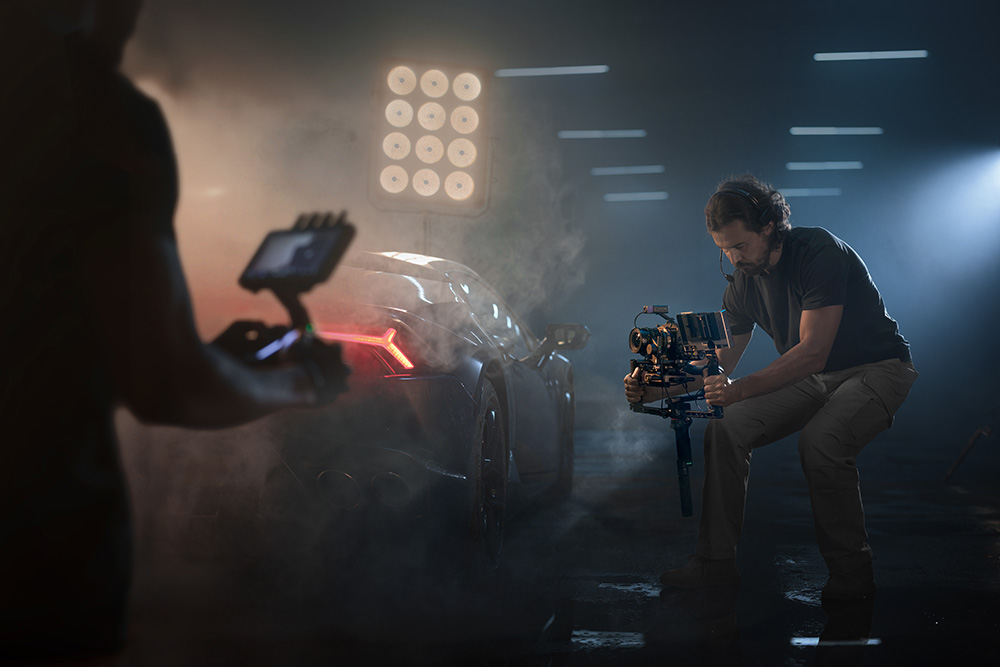
What is the difference between DJI RS 4 and RS 4 Pro?
The key differences between the DJI RS 4 and RS 4 Pro are listed in the table below. They revolve around weight capacity and accessory compatibility, with the RS 4 Pro able to utilise optional intelligent LiDAR autofocus.
|
|
DJI RS 4 Pro |
DJI RS 4 |
|
Max. payload |
4.5kg |
3kg |
|
Support for Car mode |
Yes |
NA |
|
Access to Pro Ecosystem |
Yes, Pro ecosystem with integrated Focus Pro AMF lens control |
NA |
|
LiDAR |
Optional intelligent LiDAR autofocus |
NA |
|
Max Runtime |
13 hours |
12 hours |
|
Charging Time |
Approx. 1.5 hours |
Approx. 2.5 hours |
|
Weight |
Gimbal: Approx. 1242 g Grip: Approx. 265 g Extended Grip/Tripod (Metal): Approx. 226 g Upper and Lower Quick-Release Plates: Approx. 110 g |
Gimbal: Approx. 1066 g Grip: Approx. 203 g Extended Grip/Tripod (Plastic): Approx. 183 g Upper and Lower Quick-Release Plates: Approx. 98 g |
|
Dimensions |
Folded: 271x283x75 mm Unfolded: 416x223x202 mm |
Folded: 245x255x75 mm Unfolded: 370x191x189 mm |
The RS 4 is tailored for solo content creators, offering essential functionalities for individual use. In contrast, the Pro version caters to teams filming intricate scenes using jibs, Steadicams, cable cams, or sliders, with the option to enhance capabilities through Pro accessories.
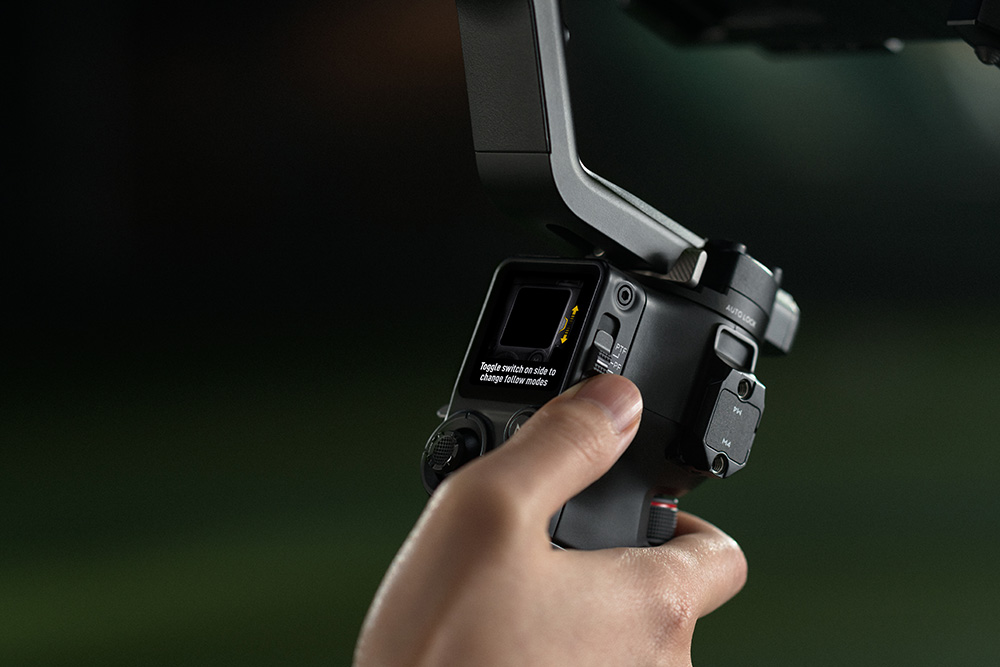
How do you use LiDAR with DJI RS 4 Pro?
With the RS4 Pro, you can unlock intelligent LiDAR autofocus capabilities through the optional DJI Focus Pro LiDAR Range Finder, which requires specific accessories. Opting for the Focus Pro All-In-One Combo (£1,449.00) or Focus Pro Creator Combo (£789.00) offers the simplest path to an extensive LiDAR autofocus solution.
What’s included in the RS 4 Combo and RS 4 Pro Combo
The table below outlines what’s included in the box with each of the RS 4 gimbal variants.
|
Gimbal |
Gimbal |
Gimbal |
Gimbal |
|
BG21 Battery Grip |
BG21 Battery Grip |
BG30 Battery Grip |
BG30 Battery Grip |
|
Quick-Release Plate (Arca-Swiss/Manfrotto) |
Quick-Release Plate (Arca-Swiss/Manfrotto) |
Quick-Release Plate (Arca-Swiss/Manfrotto) |
Quick-Release Plate (Arca-Swiss/Manfrotto) |
|
Extended Grip/Tripod (Plastic) |
Extended Grip/Tripod (Plastic) |
Extended Grip/Tripod (Metal) |
Extended Grip/Tripod (Metal) |
|
Lens-Fastening Support |
Briefcase Handle |
Briefcase Handle |
Briefcase Handle |
|
Multi-Camera Control Cable (USB-C, 30 cm) |
Lens-Fastening Support |
Lens-Fastening Support (Extended) |
Lens-Fastening Support (Extended) |
|
USB-C Charging Cable (40 cm) |
Multi-Camera Control Cable (USB-C, 30 cm) |
Multi-Camera Control Cable (USB-C, 30 cm) |
Multi-Camera Control Cable (USB-C, 30 cm) |
|
DJI Logo Sticker |
USB-C Charging Cable (40 cm) |
USB-C Charging Cable (40 cm) |
USB-C Charging Cable (40 cm) |
|
Screw Kit |
Screw Kit |
DJI Logo Sticker |
Screw Kit |
|
|
Carrying Case |
Screw Kit |
Carrying Case |
|
|
Focus Pro Motor |
Carrying Case |
USB-C Power Cable (20 cm) |
|
|
Focus Pro Motor Rod Mount Kit |
|
Mini-HDMI to Mini-HDMI Cable (20 cm) |
|
|
FIZ Sticker |
|
Mini-HDMI to HDMI Cable (20 cm) |
|
|
DJI Logo Sticker |
|
Mini-HDMI to Micro-HDMI Cable (20 cm) |
|
|
Focus Gear Strip |
|
Ronin Image Transmitter |
|
|
|
|
Focus Pro Motor |
|
|
|
|
DJI Logo Sticker |
|
|
|
|
FIZ Sticker |
|
|
|
|
Focus Pro Motor Rod Mount Kit |
|
|
|
|
Focus Gear Strip |
|
|
|
|
Lower Quick-Release Plate (Extended) |
|
|
|
|
Phone Holder |
How do you pull focus with the Focus Pro Motor?
DJI makes it easy for solo filmmakers to pull focus via the Focus Pro Motor, which is included with both Combos. Once connected your setup requires rebalancing due to the additional weight. When this is completed, select front gimbal dial to control focus via the menu, after which a green light should activate on the focus motor.
If using a cinema lens you can calibrate near to infinity by setting focus motor end points through the menu. That’s it, you can now use the front gimbal dial is used to pull focus. Alternatively you can use the DJI smartphone app rather than the front gimbal dial, freeing up the front wheel for use with other controls.
Is ActiveTrack easy to engage and can you change comp?
Once engaged ActiveTrack will track one subject and the scene can be recomposed by using the joystick on the grip to control the gimbal and compose your shot.
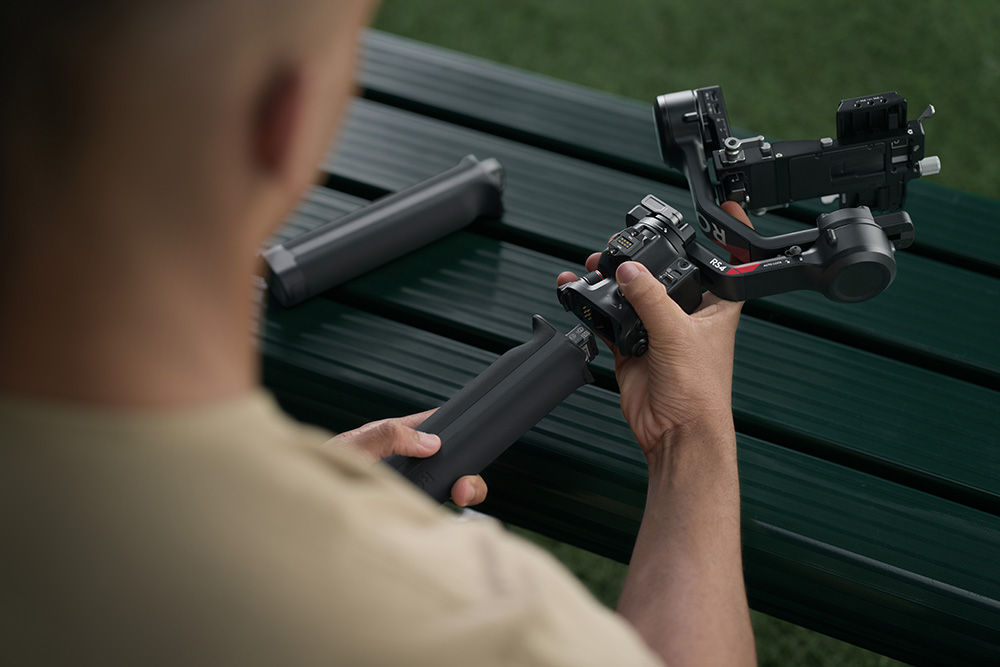
What is DJI RS 4's Dual-Mode Bluetooth Technology?
DJI RS 4's Dual-Mode Bluetooth technology enables several key functions. By pressing the camera control button halfway, you control autofocus; a single press starts/stops recording, and holding the button captures a photo. The joystick can also control Power Zoom for Sony PZ lenses and Sony Clear Image Zoom, enhancing shooting versatility.
Are there DJI Developer SDKs?
DJI is updating the RS SDK, with a developer protocol enabling developers and third-party manufacturers to enhance control of stabilisers like the RS 4 Pro, RS 3 Pro, and RS 4. This empowers solo users and production crews to harness multiple stabilisers for a wide range of scenarios, with features such as:
- Set the gimbal position
- Control rotation
- Get motor and attitude information
- Control camera focus and shooting
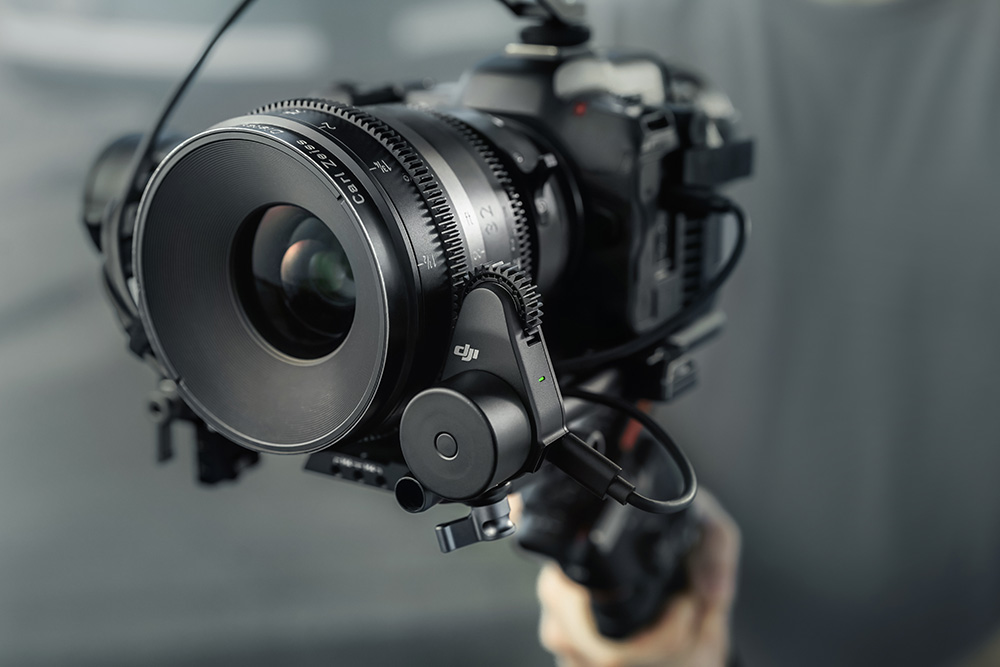
Optional follow focus setup, which can be remote controlled and programmed via SDK
Applications include the possibility to build a virtual studio system that can use a PC or console to control one or multiple RS stabilisers. Alternatively, a stabiliser could be mounted on a slider and the two could be linked through programming for four-dimensional control.
With this generation RS 4 gimbal DJI has improved battery life, stabilisation, vertical shooting and usability, all without increasing price. The Pro version offers comprehensive LiDAR control, for sharp results in more challenging remote conditions, meeting the demands of professional TV and film studio applications.
Browse our full lineup of camera gimbal stabilisers, or explore the DJI RS 4 and DJI RS 4 Pro in more detail here and take your productions to the next level with greater creative flexibility.
If you’ve got an older generation gimbal stabiliser, or other camera gear to sell, why not grab a free quotation and we’ll ensure the entire upgrade process is as smooth as RS 4 footage.
Share this post:
By Nick Dautlich on 09/04/2024
Nick Dautlich
Senior Content Writer and Product Reviewer
Nick Dautlich is the Senior Content Writer and Product Reviewer at Park Cameras, with over 15 years of photography experience. A Sony Imaging Professional and expert reviewer, Nick has worked with major brands such as Canon, Sony and Nikon. His work is also featured on Vanguard World UK’s website, Capture Landscapes, and Shutter Evolve. Nick’s photography includes National Trust projects and magazine covers and he is passionate about landscapes and storytelling. Nick also enjoys hiking and teaching his children about nature. Learn more on his profile page.

Trade in your old equipment
Fast and easy trade in service ensures your old gear is collected efficiently and you are paid quickly! It's very simple to trade in your unwanted photography gear. Just head over to our dedicated Sell or Part Exchange page, fill out the details, and we'll get back to you with an offer for your old gear. Take the cash, or put it towards the cost of your new gear. It's up to you! Find out more
sign up to the newsletter
Keep up to date on the latest photography news, events and offers. Sign up now
